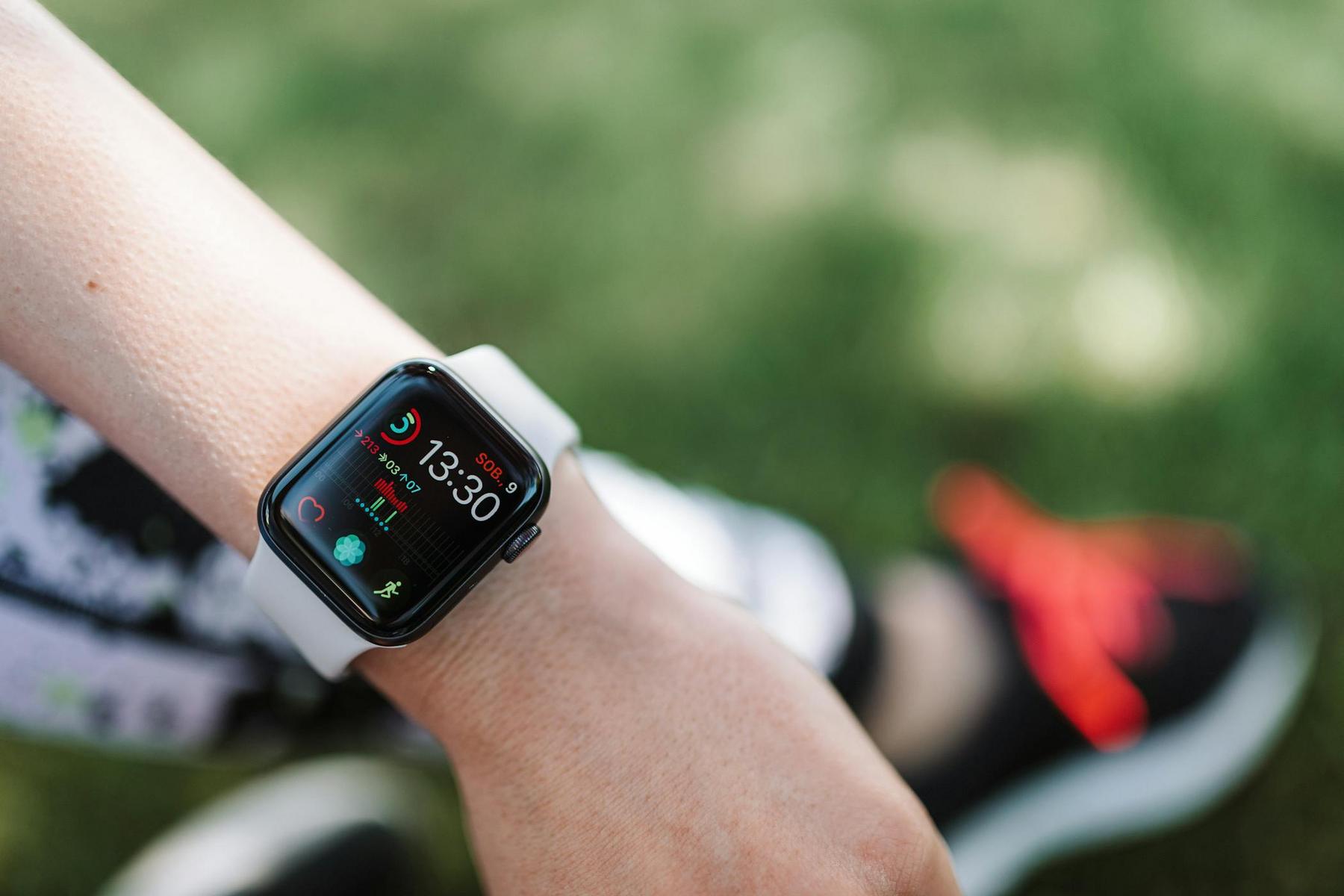The average Australian takes just 5,900-6,900 steps daily—well below the threshold needed for optimal health benefits. In a nation where sedentary lifestyles contribute to rising obesity rates and cardiovascular disease, this shortfall represents more than missed opportunities; it signals a health crisis that simple technology can help address. Using a step counter to boost daily activity has emerged as one of the most accessible and effective interventions for transforming health outcomes, with research demonstrating that structured step tracking can reduce all-cause mortality risk by up to 53% whilst enabling clinically significant weight management results.
Modern Australia faces an unprecedented challenge: despite living in one of the world’s most liveable countries, our population moves less than ever before. The solution isn’t complex gym memberships or expensive equipment—it’s as simple as understanding how many steps you take each day and systematically increasing that number through evidence-based strategies.
How Does Step Counting Transform Daily Activity Patterns?
Using a step counter to boost daily activity fundamentally changes how we perceive and engage with movement throughout our day. Step counters transition physical activity from an abstract concept into measurable, actionable data that provides immediate feedback on daily movement patterns.
The psychological impact of step tracking operates through goal-setting theory, making activity progress tangible and achievable. When individuals can see their step count in real-time, they naturally begin to identify opportunities for increased movement—taking stairs instead of lifts, parking further away, or adding short walks to break up sedentary periods.
Research demonstrates that step counter users experience 6-11% reductions in anxiety and depression scores when increasing daily steps by just 1,000. This improvement stems partly from β-endorphin release during sustained walking and the psychological satisfaction of achieving measurable goals.
The mechanism behind this transformation is threefold: step counters provide immediate feedback, create accountability through data tracking, and establish clear, achievable targets that progressively challenge users to increase their activity levels.
Environmental cues become more apparent when using step counters. Workplace interventions using prompt engineering, such as hourly vibration alerts, have increased daily steps by 2,300 in office workers. This demonstrates how step tracking devices can effectively combat the sedentary nature of modern work environments.
What Are the Proven Health Benefits of Using a Step Counter?
The health benefits of using a step counter to boost daily activity extend far beyond simple fitness tracking. Clinical research reveals profound physiological improvements across multiple health markers when individuals consistently achieve evidence-based step targets.
Cardiovascular health improvements are among the most significant benefits. Pedometer users averaging 9,800 steps daily exhibit 14mmHg lower systolic blood pressure compared to sedentary counterparts taking fewer than 5,000 steps. This reduction occurs through walking’s dual impact on vascular function: mechanical stimulation of endothelial nitric oxide production improves arterial elasticity, whilst sustained calorie expenditure reduces visceral adipose tissue linked to inflammatory cytokines.
Weight management outcomes demonstrate remarkable consistency across clinical studies. The energy deficit created by increasing daily steps from 5,000 to 10,000 approximates 400-600 calories daily—sufficient for 0.5kg weekly weight loss when maintained consistently. An 18-month intervention showed that participants achieving 10% or greater weight loss averaged 9,822 steps daily, with 3,482 steps from moderate-vigorous activity bouts.
Metabolic benefits include improved glucose regulation and insulin sensitivity. Longitudinal data from Australian women aged 54-59 years reveals that combining leisure-time activity with step tracking lowers BMI by 1.2-4.1 points compared to sedentary groups. This intensity threshold, measured at 100 steps per minute or greater, preferentially mobilises fat stores whilst preserving lean muscle mass—critical for preventing metabolic slowdown during weight loss efforts.
The psychological reinforcement provided by step counters addresses intention-behaviour gaps through real-time feedback. Meta-analyses of digital interventions show 89.5% compliance rates when combining pedometers with structured health coaching, significantly higher than traditional exercise programmes without tracking components.
How Many Steps Should You Take Daily for Optimal Results?
Determining optimal daily step targets requires understanding age-specific recommendations and the relationship between step count, intensity, and health outcomes. Using a step counter to boost daily activity becomes most effective when targets align with evidence-based guidelines tailored to individual circumstances.
Age-Specific Step Recommendations:
| Age Group | Optimal Steps/Day | Mortality Risk Reduction | Intensity Threshold |
|---|---|---|---|
| 18-59 years | 7,000-10,000 | 46-53% | 100 steps/min for ≥10min bouts |
| ≥60 years | 6,000-8,000 | 38-42% | 80 steps/min cumulative |
These targets align with Australian physical activity guidelines recommending 150-300 weekly moderate-intensity minutes, equivalent to 30-45 minutes daily walking at 100-130 steps per minute. The key insight is that step intensity below 3 METs (approximately 65 steps per minute) provides limited cardiometabolic benefit, emphasising quality over quantity in step accumulation.
For weight management specifically, research indicates that achieving 10,000 steps daily creates sufficient energy expenditure for meaningful weight loss when combined with appropriate dietary interventions. However, the distribution of these steps matters significantly—incorporating bouts of moderate-vigorous intensity (≥100 steps per minute) for periods of 10 minutes or longer provides superior metabolic benefits compared to the same number of steps accumulated through light-intensity movement.
Progressive goal setting proves most effective for long-term adherence. Beginning with incremental 500-step daily increases prevents discouragement whilst building sustainable habits. Individuals currently taking fewer than 5,000 steps daily should initially target 6,000-7,000 steps before progressing toward optimal ranges.
The concept of “step debt” becomes relevant for sedentary Australians. Those averaging the national average of 5,900-6,900 daily steps fall 1,100-4,100 steps short of health-protective thresholds, representing a significant opportunity for intervention through structured step counting programmes.
Which Step Counter Features Matter Most for Long-Term Success?
Selecting appropriate step counting technology significantly impacts long-term success when using a step counter to boost daily activity. Device accuracy, user interface design, and integration capabilities determine whether step tracking becomes a sustainable habit or temporary novelty.
Accuracy considerations should guide device selection. While consumer wearables like fitness trackers achieve 93-97% step count accuracy, basic pedometers vary widely with error margins of ±5-28%. Clinical studies favour research-grade devices with triaxial accelerometry and ±3% error margins, though these remain cost-prohibitive for most consumers.
For practical applications, devices achieving 98% accuracy provide reliable feedback for behaviour change whilst remaining accessible. Consumer device discrepancies become particularly apparent in stair climbing detection (±18% steps) and non-ambulatory movement recognition, requiring algorithm adjustments for comprehensive activity tracking.
Essential features for sustained engagement include:
- Real-time step display with progress toward daily goals creates immediate feedback loops that reinforce positive behaviours. Historical data tracking enables users to identify patterns, celebrate progress, and adjust targets based on capability and circumstances.
- Integration with smartphone applications expands functionality beyond simple step counting. Apps that sync step data with dietary tracking, weight monitoring, and health records provide comprehensive lifestyle management tools that support long-term behaviour change.
- Battery life and device durability impact daily use consistency. Devices requiring frequent charging or prone to damage during normal activities create barriers to sustained use. Water resistance and robust construction ensure continuous monitoring across diverse activities and weather conditions.
Hybrid models integrating heart rate monitoring improve metabolic equivalent (MET) estimation accuracy to ±0.8, enabling reliable calorie burn calculations that enhance weight management precision. This technology becomes particularly valuable for individuals combining step tracking with structured weight loss programmes.
How Can You Integrate Step Tracking into Weight Management?
Integrating step counting into comprehensive weight management strategies amplifies results beyond what either intervention achieves independently. Using a step counter to boost daily activity becomes most effective when combined with evidence-based dietary modifications and professional medical guidance.
The synergy between step tracking and weight management operates through multiple mechanisms. Each 1,000-step increase permits approximately 150-calorie additional dietary intake whilst maintaining energy deficit, providing flexibility that improves long-term adherence to weight loss programmes. This precision nutrition approach enables personalised calorie adjustments based on actual activity levels rather than estimated energy expenditure.
Modern telehealth delivery models demonstrate how pedometer data enhances remote obesity care. Patients transmitting daily step counts via smartphone applications receive real-time dietary adjustments from healthcare providers, creating dynamic treatment plans that respond to changing activity patterns. This approach, when combined with medical weight management interventions, yields significantly improved outcomes compared to standard care protocols.
Behavioural change techniques that enhance step tracking effectiveness include:
- Goal gradient implementation through incremental 500-step daily increases prevents overwhelming targets whilst building sustainable habits.
- Environmental cue modifications, such as workplace sit-stand schedules, boost non-exercise activity thermogenesis by an average of 2,300 steps daily.
- Social contingencies through step count sharing in team challenges increase adherence by 37%, demonstrating the power of accountability and community support in behaviour modification.
Professional medical supervision becomes crucial when using step tracking for significant weight management. Healthcare providers can adjust step targets based on existing health conditions, medications, and weight loss progress, ensuring safe and effective programme implementation.
The integration of continuous glucose monitoring with step tracking applications shows real-time glycemic impacts of activity, providing immediate feedback on how movement affects blood sugar regulation. This technology proves particularly valuable for individuals with diabetes or metabolic syndrome incorporating increased activity into their management strategies.
What Common Mistakes Should You Avoid When Using Step Counters?
Understanding common pitfalls when using a step counter to boost daily activity prevents frustration and supports long-term success. Many individuals abandon step tracking due to preventable mistakes that undermine motivation and progress.
Unrealistic initial targets represent the most frequent error. Setting 10,000-step goals for individuals currently averaging 3,000-4,000 daily steps creates insurmountable challenges that lead to abandonment. Progressive goal setting, beginning with 20-30% increases from baseline, builds confidence and sustainable habits.
Focusing exclusively on step quantity whilst ignoring intensity limits health benefits. Accumulating 10,000 steps through light-intensity activities provides fewer metabolic benefits than 7,000 steps including moderate-vigorous bouts. Understanding the importance of step intensity ensures maximum return on effort invested.
Device dependency becomes problematic when technical failures or forgotten devices derail motivation entirely. Developing awareness of approximate step counts through time-based walking (100 steps per minute) maintains progress during device issues and builds intrinsic activity awareness.
Ignoring individual limitations such as joint problems, cardiovascular conditions, or medication effects can lead to injury or health complications. Professional medical consultation before significantly increasing activity levels ensures safe programme implementation, particularly for individuals with existing health conditions.
All-or-nothing thinking causes many people to abandon step tracking after missing daily targets. Understanding that consistency over perfection drives long-term results helps maintain motivation during challenging periods or when life circumstances temporarily reduce activity levels.
Plateau frustration occurs when initial rapid progress slows as fitness improves and weight stabilises. Adjusting goals to include intensity targets, strength training integration, or activity variety prevents stagnation and maintains engagement beyond simple step accumulation.
The Future of Activity Tracking in Australian Healthcare
The integration of step counting technology into mainstream healthcare represents a paradigm shift toward preventive medicine and patient empowerment. Using a step counter to boost daily activity has evolved from fitness enthusiasm to evidence-based medical intervention with profound implications for population health outcomes.
Emerging technologies address current limitations through innovative solutions. Insole sensors using shear force measurement distinguish walking from driving with 95% accuracy, whilst machine learning algorithms adjust step goals using weather patterns, schedule data, and historical performance metrics.
The potential for healthcare system integration becomes increasingly apparent as step counting data provides objective activity measures that complement traditional clinical assessments. Incorporating pedometer information into electronic health records could enable automated notifications when patients fall below activity thresholds associated with increased health risks.
Research demonstrates that achieving optimal daily step counts correlates with 20-30% reductions in all-cause mortality risk, positioning step tracking as a critical tool for addressing Australia’s chronic disease burden. For a population currently averaging 5,900 daily steps, adopting evidence-based step targets could prevent thousands of annual obesity-related health complications whilst reducing associated healthcare costs.
The accessibility and affordability of step counting technology make it uniquely positioned to address health inequities across diverse Australian communities. Unlike expensive gym memberships or specialised equipment, basic pedometers provide accurate feedback at minimal cost, enabling population-wide intervention programmes that transcend socioeconomic barriers.
Using a step counter to boost daily activity represents more than individual behaviour change—it offers a scalable solution for improving population health outcomes through evidence-based, technology-supported interventions that align with contemporary healthcare delivery models.
How accurate are consumer step counters compared to medical-grade devices?
Consumer wearables typically achieve 93-97% step count accuracy, whilst basic pedometers vary widely with error margins of ±5-28%. Research-grade devices with triaxial accelerometry maintain ±3% accuracy but remain cost-prohibitive for most users. For practical behaviour change, devices achieving 95%+ accuracy provide reliable feedback for sustainable activity improvement.
Can step counting alone provide sufficient exercise for weight management?
Step counting provides an excellent foundation for weight management but works most effectively when combined with dietary modifications and strength training. Achieving 10,000 daily steps creates approximately 400-600 calorie energy expenditure, sufficient for meaningful weight loss when maintained consistently alongside appropriate nutrition strategies.
What’s the minimum daily step count needed for health benefits?
Research indicates that health benefits begin accumulating at 7,000 daily steps for adults under 60 years and 6,000 steps for those over 60. However, step intensity matters significantly—incorporating bouts of 100+ steps per minute for 10-minute periods provides superior metabolic benefits compared to the same number of light-intensity steps.
How should I progress my step goals safely?
Begin by tracking current activity levels for one week to establish baseline measurements. Increase daily targets by 500-1,000 steps weekly, allowing adaptation before further progression. Individuals with existing health conditions should consult healthcare providers before significantly increasing activity levels to ensure safe programme implementation.
Do step counters work for all types of physical activity?
Step counters excel at tracking ambulatory activities like walking, jogging, and stair climbing but may not accurately capture cycling, swimming, or resistance training. For comprehensive activity monitoring, consider devices that integrate heart rate monitoring or use hybrid tracking methods that account for non-step-based exercises.



